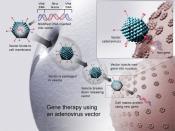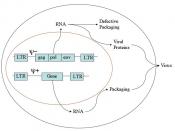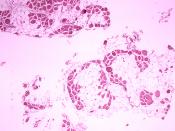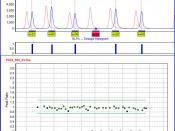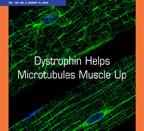Liberal Studies Medicine and its derivatives have made countless novel advances throughout history, developing in tandem with the human species itself. We have gone from primitive cavemen, using fire to seal wounds, to a society, at least in America, which can prevent and cure some of the once deadliest afflictions. We pride ourselves on being able to treat illness, overcome pain and constantly seek new ways to improve upon current methods, eternally questing for an improved quality of life. However, it is often the case that along with new ideas and procedures moral and ethical debates develop, asking what limits should be imposed upon the implementation of our knowledge. Such is the case of gene therapy, a controversial field seeking to improve human life, but in a manner that many see as disagreeable.
Gene therapy can be defined as the treatment of certain disorders, especially those caused by genetic anomalies or deficiencies, by introducing specifically engineered genes into a patient's cells.
It comes in two distinct forms, each of which must be looked at separately because of their distinctly different applications for the future of medicine and human society. Somatic gene therapy entails the alteration of genes within non-reproductive cells, all cells excluding sperm and eggs, thus theoretically having no influence upon the genetic make-up of future generations. However, germ-line gene therapy is the specific alteration of sperm or egg, thus having not only an effect upon the immediate progeny, but also on all successive generations.
Yet, before the ethical implications of such practices can be discussed, one must have an idea of why such procedures would be developed in the first place. Many of the most degenerative and dehabilitating diseases: Huntington's chorea, sickle-cell anemia, Duchenne muscular dystrophy, hemophilia and some "2,800 [other] specific conditions are known to be caused by defects (mutations) in just one of the patient's genes."1 These genes normally code for the production of a specific enzyme, but when the gene is defective, either the protein is not produced or is altered in such a way that it no longer functions in the necessary way and can play a harmful, instead of beneficial, role. One must treat such diseases at the genetic level, as this is from where the defect stems.
So enters the alteration of genes outside the body, which can later be implanted in vivo, inside the body, into the tissue or organs normally associated with the production of the enzyme needed for normal function, thus resulting in tissue that can produce the correct enzymes and prevent the disease. Such a method is an example of somatic gene therapy, as only non-reproductive cells are being altered and there is no future impact on successive generations. This procedure was first done in humans to treat ADA deficiency, a rare disease causing immunodeficiency, making its suffers prone to repeated serious infections, usually resulting in a life span of no more than a year. "The initial attempt to use gene therapy⦠involved regular infusions of the patients' own genetically corrected T-lymphocytes,"2 which could then function normally and fight against disease.
It is easily seen how such procedures could be deemed beneficial, as they offer hope to people with dreadful diseases, people that had no hope before. Yet, the overwhelming question that surrounds this technology is not how it is to be done, but whether or not it ought to be done in the first place. This debate has been searing ever since the early 90's when the first gene therapy procedures were preformed on human subjects.
Proponents and opponents of gene therapy generally agree that somatic therapy is "further extension" of the same medical field that has brought us "organ transplants, radiation therapy and in vitro fertilization."3 If one pictures a person with a hereditary disease like Diabetes, it would make perfect sense, both ethically and financially, for such a person to undergo a gene treatment. Through alteration of his genes, this would allow him to produce and regulate insulin levels normally, without having to spend the reset of his life monitoring blood sugar levels and taking synthetic insulin. By directly giving this person the ability to make his own functioning enzymes, we are only improving upon the present medical system, updating it with technology, just as it has been for the past 5,000 years.
Where the two sides staunchly disagree is over the matter of germ-line gene therapy, when it is not a question of health for the present individual, but becomes a decision ruling over the future of all successive generations. The Clothier committee, a committee convened in 1996 to investigate the implications of gene therapy, reported, "We share the view of others that there is at present insufficient knowledge to evaluate risks to future generations," and recommended that germ-line therapy "should not yet be attempted." This alone prompted Britain to draft a law making human research in the area illegal.
The church and other opponents of germ-line therapy call into question the liberty of choice that is being removed from the progeny of engineered germ cells. They see such a process as "a conscious decision to cause a unchangeable physiological effect not only in all our children, but all their subsequent generations also, which would not otherwise occur."4 Some have even gone so far as to proclaim those who research such procedures as pretentiousness, bordering upon playing God.
On the other hand are those that argue the rewards of germ-line therapy far outweigh any potential costs. They strongly believe that no person would want a dehabilitating disease, like muscular dystrophy, and that germ-line therapy could provide beneficial results for thousands of people and any children they may produce. However, the danger in adopting such a position comes out when regulations are broken, researchers step out of bounds, or when marketing firms attempt to take over such technology, invariably reducing it to a bottom-line oriented, profit-seeking machine. Also, at the present time we know so little about the effects of gene therapy procedures that we could be making dreadfully harmful mistakes completely unknowingly and unwittingly.
Thus, with germ-line therapy, to a much greater extent than somatic therapy, we must remain cautious of every step we take, as any failure, just like any success effects our children and our future. This can be no better reiterated than in the caution presented by Dr. Donald M. Bruce of the Church of Scotland. He states: "The human genome project can be seen as a continuation under God of our understanding of his creation, to be used to care for our fellow humans and glorify the Creator. There needs to be constraints to keep back the excesses to which human beings are prone, and to keep genetics in a proper balance with the whole round of human activity and human need." Medicine continues to advance at a staggering rate, bringing with it comfortable advances that seek to make us live healthier more productive lives and at the forefront of this progression is gene therapy. A resource so novel that its long-term effects have not been fully explored, but so powerful that its disuse could only cause further suffering. Our role in the use of such an innovation must be to prevent its decline into the excesses of human society and learn more fully its effects before pretentiously implementing its wide-scale use. Unlike so many things before, it is imperative that this time we proceed cautiously and with proper reserve.
Literature Cited 1.) Biotechnology Industry Organization. 1990 Biotechnology in Perspective.
Biotechnology Industry Organization, Washington D.C.
2.) National Cancer Institute. 1998 NCI Fact Sheet. CancerNet, Internet.
3.) Anderson, W. F. 1995 End-of-the-Year Potpourri. Human Gene Therapy 6:12-15 4.) Bruce, Donald. M. 1998 Science, Religion and Technology Project: Moral and Ethical Issues in Gene Therapy. Church of Scotland, Scotland.
